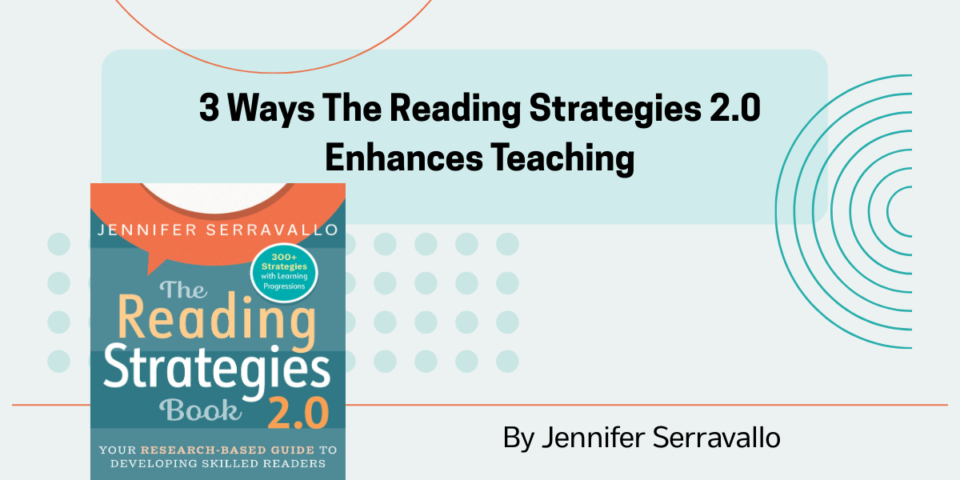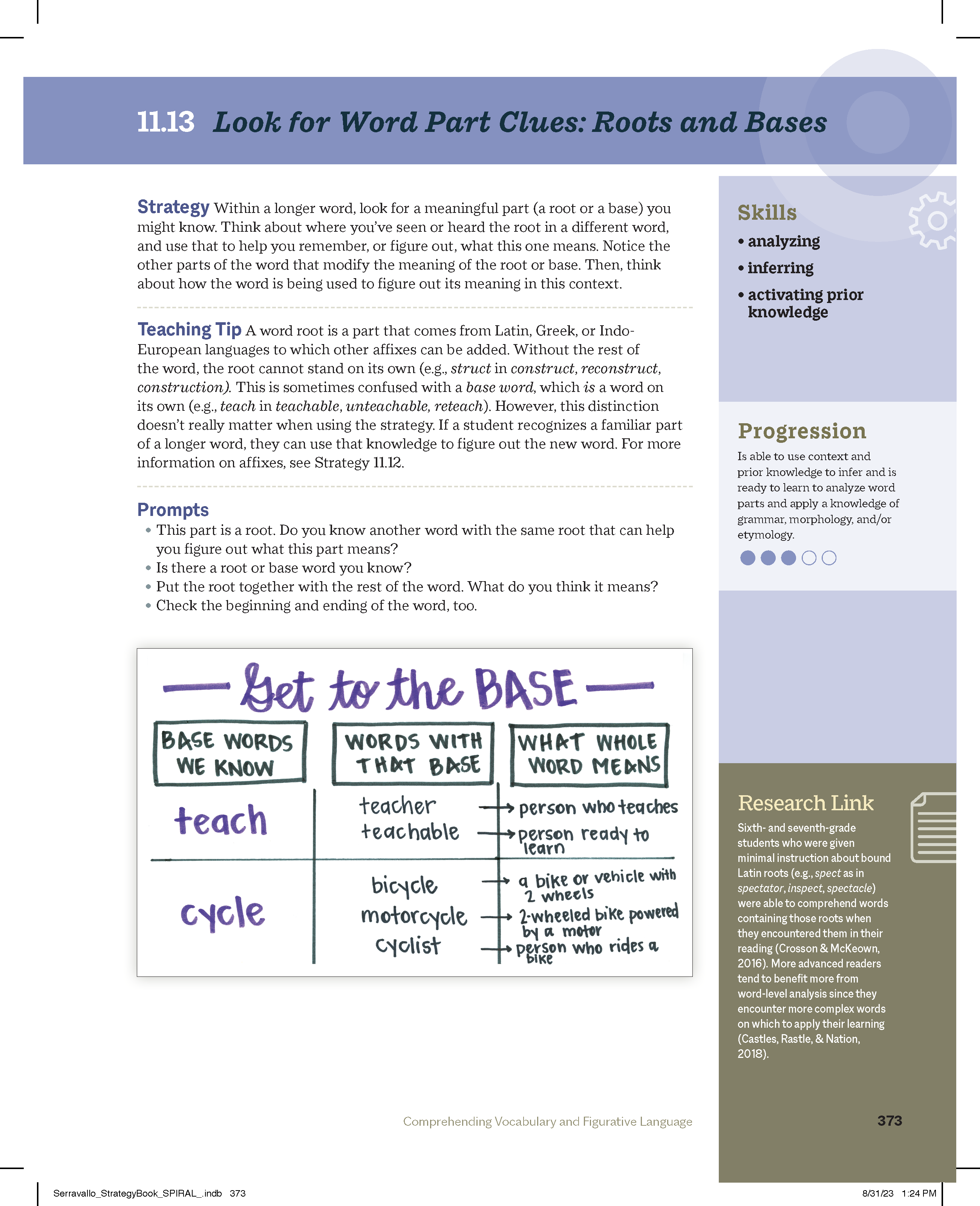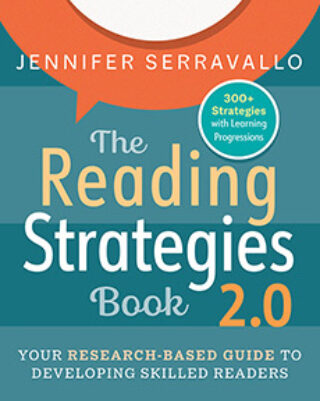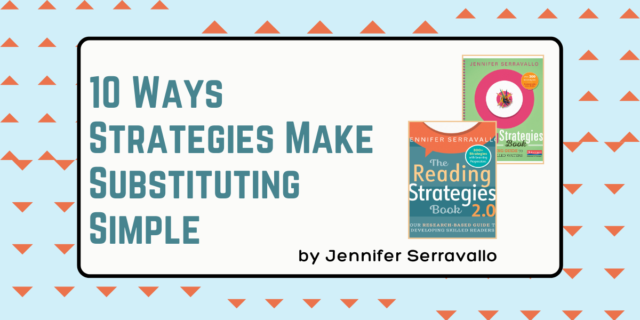
With so much attention on knowledge building curriculum, I often get asked if teaching strategies is a good use of instruction time. My answer: it’s critical to include strategies in every lesson as long as we remember strategies are not the end goal but rather tools that help students learn from what they read. Whether it’s sustaining focus, reading with emotion, determining the main idea, inferring character motivation, or analyzing satire, strategies show students how to break any reading task into clear steps, allowing them to more easily extract knowledge from any text.
Let’s explore three ways how you can use The Reading Strategies Book 2.0 to enhance the lessons in your reading program.
Match lesson objectives to strategies.
I have found that although reading programs cover the range of skills kids need to master, they don’t often break those skills down into clear steps. For example, a lesson in a reading program might ask students to read a passage and write a paragraph explaining how a character changes across the story. But how do readers do this? How do they draw inferences about the character’s motivation? How do they tell which of the character’s actions are most important? How do they synthesize all the information they have learned about a character?
Using The Reading Strategies Book 2.0, first look to the Hierarchy of Reading Goals on the inside front cover to determine which of the 13 reading goals—each corresponding to a full chapter of strategies—best connects to the lesson objective(s). In this case, it would be the goal focused on comprehending character. Next, turn to the skill progression for comprehending character which will help you quickly determine where students are and what skills they need to practice. The related strategies are listed right next to each phase of the skill progression. On each strategy page you’ll find lesson language, teaching tips, prompts, and even a classroom anchor chart to quickly and easily introduce and teach the strategy.
And for those of you using Ampify CKLA, EL Education, Into Reading, Wit and Wisdom, or Wonders, I have created free correlations to make it even easier for you to select the right strategies for each lesson.
Match standards to skill progressions and relevant strategies.
Most reading programs include brief module and lesson summaries correlated to standards. It’s super easy to determine which of the standards correlates to each of the 13 reading goals.
For example, the grade 5 standards for most states require that readers be able to determine and summarize two or more main ideas using textual support. In this instance, you would turn to the skill progression in the comprehending topics and main ideas chapter and match the language describing each phase in the progression to that grade’s standard. Fifth grade students, for example, might use a strategy that helps them consider the structure of the text and identify cause and effect or shows them how to compare and contrast.
For teachers in Florida, Georgia, New Jersey, New York, Texas, or Virigina or those in states that use the Common Core standards, I have already done the work for you with free correlation documents. Just download, find the grade you teach, and see the strategies that match.
Review student work to determine best strategies.
Look at the assessments provided by your reading program. Study the data you regularly collect. Observe your students. Listen to them closely. Maybe you’ve noticed that when your students are discussing a text, it’s clear they haven’t understood key vocabulary. So you know your students need strategies to help them figure out what new words mean that they encounter while reading.
Using the skill progression in the comprehending vocabulary and figurative language chapter, you can look at the phases to determine where your students are. If students skip over an unknown word, they may simply need to sound out the word in different ways. They may not recognize the spelling, but if they say it out loud, it may sound familiar. If students are ready to infer a definition from sentence level context, they can look for the definition in the text, set off by commas or em dashes. Or they can use their knowledge of prefixes, root words, and suffixes to figure out what a word means. If a student is confidently using multiple strategies, they may be ready to explore outside sources, such as a glossary or a video or podcast on the same topic. A reader armed with multiple strategies to help them figure out words is a reader ready to tackle complex grade-level texts.

By aligning lesson objectives, standards, and student needs with the strategies in The Reading Strategies Book 2.0, you’ll empower your students with the tools they need to become independent, proficient readers.



